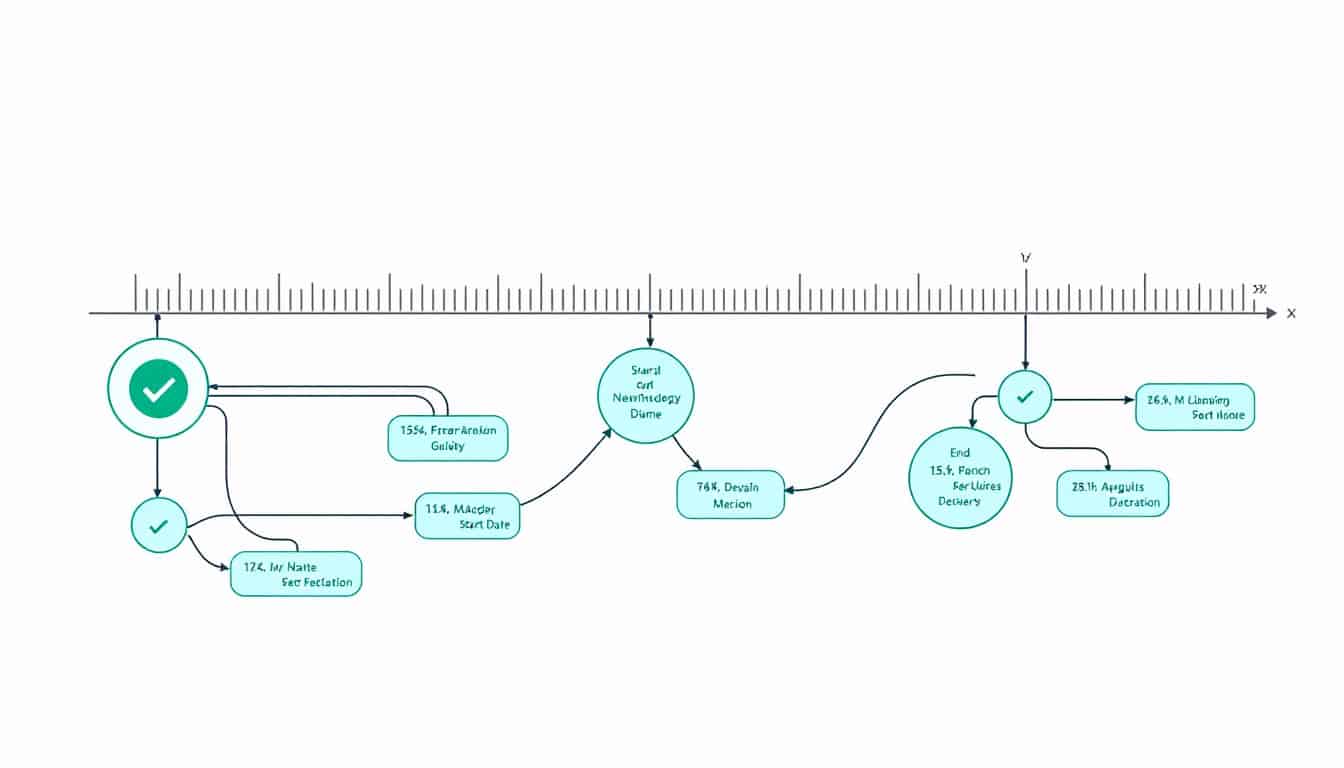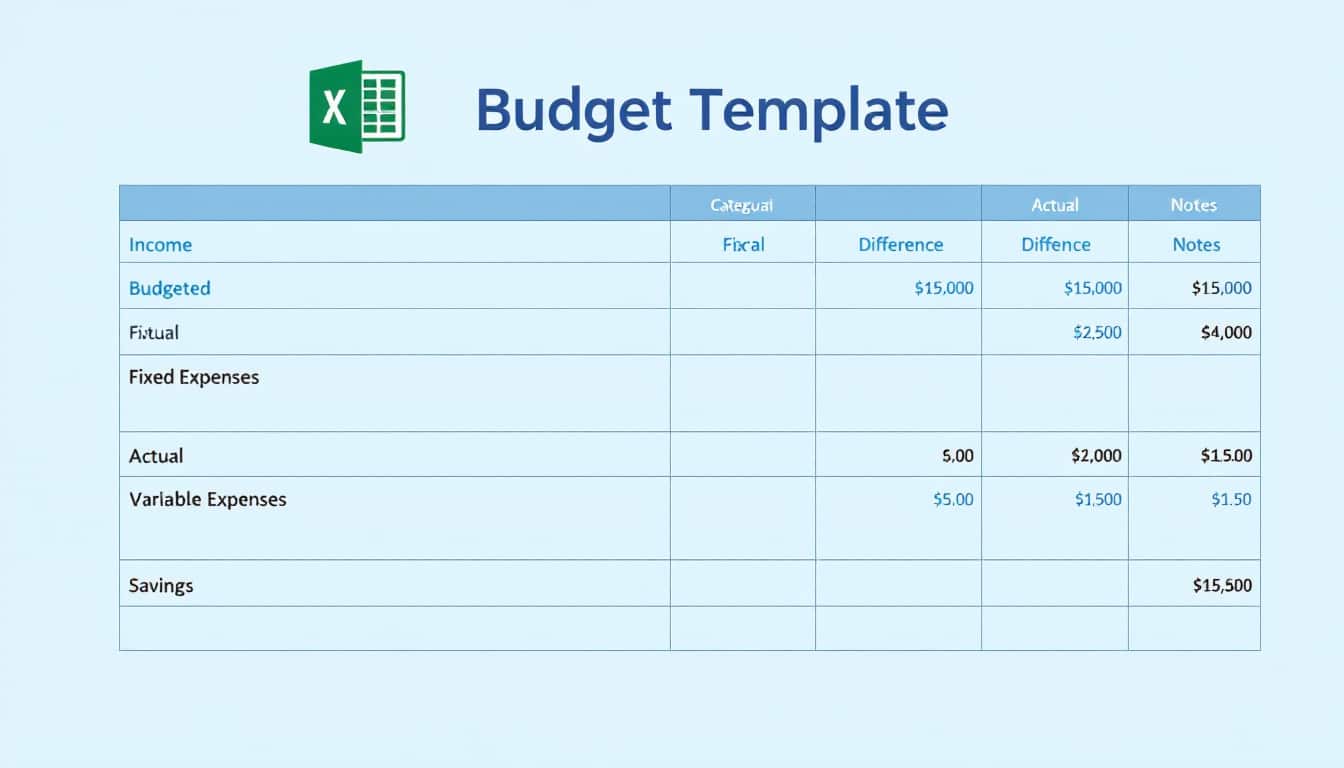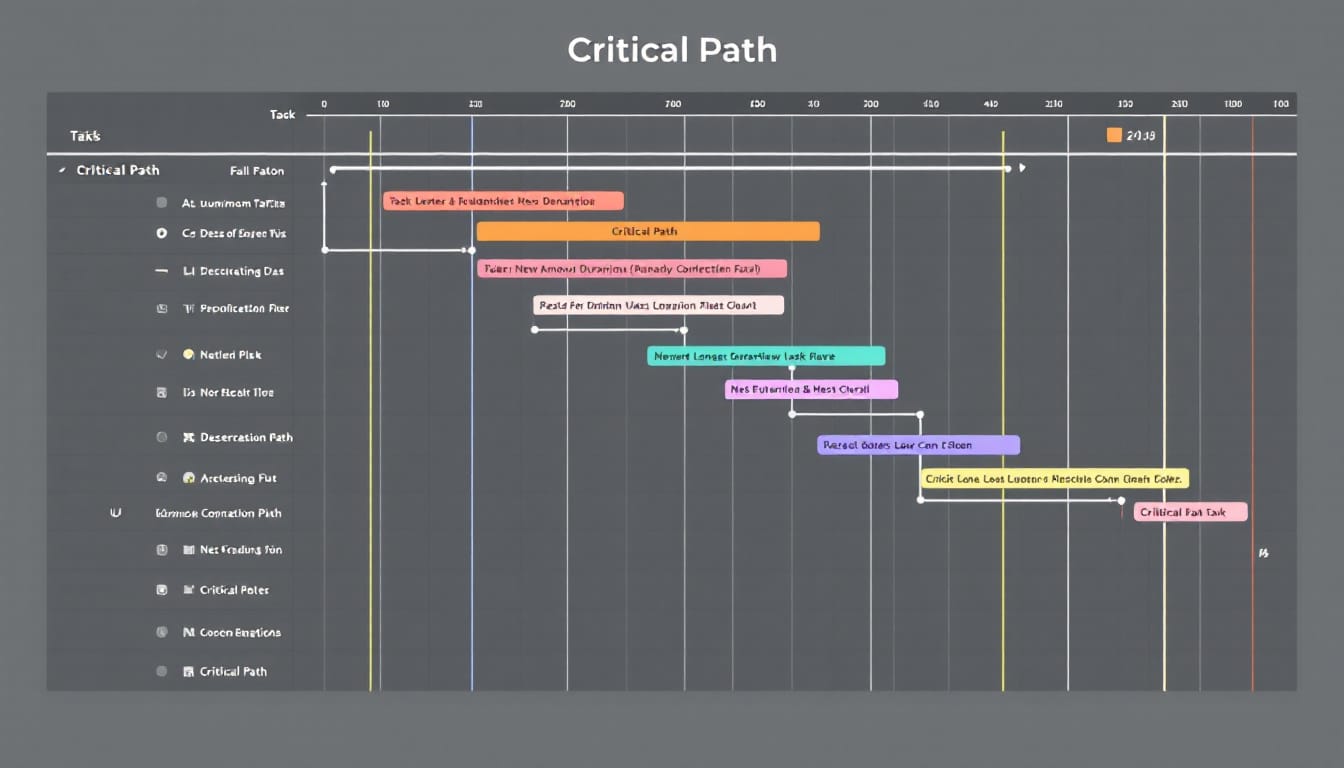Managing a construction project requires absolute precision in estimating resources.Every detail counts when it comes to maintaining profit margins.This is where quantity takeoff comes into play, a crucial step.
In the construction world, anticipating the needs for materials, labor, and other resources is essential to ensure the success of a project. The quantity takeoff allows general contractors to accurately assess the necessary quantities, thereby avoiding budget overruns. By mastering this process, they can effectively plan procurement and work scheduling. Furthermore, rigorous estimation facilitates the preparation of competitive bids during tenders. Involving the right stakeholders in this process ensures optimal completeness and accuracy. Thus, quantity takeoff stands as a fundamental pillar of construction project management.
🔥 Nous recommandons Ideamap
Ideamap est l’outil idéal pour un brainstorming ou un projet collaboratif. Grâce son interface facile et à ses fonctions IA, Ideamap booste votre créativité tout en favorisant une meilleure organisation de vos idées pour atteindre vos objectifs.
What is quantity takeoff in construction?
Quantity takeoff in construction, also known as quantity takeoff, is a fundamental process in construction project management. This method involves measuring and listing the quantities of materials, labor, and resources necessary to successfully carry out a project. By conducting this assessment, general contractors can accurately estimate costs, time, and required materials, thereby ensuring compliance with profit margins.
To perform an effective takeoff, it is essential to identify, count, and measure all elements of the project, such as concrete, steel, pipes, wiring, and many others. This detailed analysis not only allows for cost estimation but also optimally plans material procurement, ensuring that the necessary quantities are ordered in a timely manner and in the right proportions.
Additionally, the quantity takeoff plays a critical role in preparing bids during the tendering process. By providing accurate estimates, contractors can submit competitive and profitable proposals, thereby increasing their chances of winning contracts without compromising profitability.
By integrating sophisticated project management tools, such as project management software, the quantity takeoff process can be automated and made more efficient, especially for large-scale projects. These tools simplify the creation of takeoff documents, whether in the form of spreadsheets or digital files, thereby facilitating collaboration among different project stakeholders.
Why is quantity takeoff essential in project management?
Quantity takeoff is indispensable to ensure the success of a construction project. It provides clear visibility into the needs for materials and labor, which is crucial for accurate planning and budgeting. With a detailed estimate of the necessary quantities, project managers can avoid budget overruns and potential delays that could jeopardize project completion.
The advantages of this process are numerous. First, it allows for realistic cost estimates. By knowing exactly the quantity of each material required, contractors can avoid financial surprises related to underestimated costs or unforeseen expenses. It also contributes to the preparation of competitive bids, ensuring that submitted proposals remain profitable while being attractive to potential clients.
Next, the quantity takeoff facilitates resource planning and project scheduling. By understanding the scope of the materials and labor needed, managers can effectively organize their teams and ensure that materials are available at the right time. This reduces the risks of shortages or resource overloads, thereby optimizing the overall efficiency of the project.
Finally, this evaluation plays a key role in monitoring project progress during execution. By comparing the actual quantities used with those initially estimated, it is possible to quickly identify discrepancies and take corrective actions. This helps keep the project on track and ensures it is completed within the specified deadlines and budget.
When should a quantity takeoff be performed in a construction project?
The quantity takeoff should be performed at several key stages of the construction project management cycle to ensure maximum accuracy and efficiency. The first crucial moment is during the pre-construction phase or at the tendering stage. At this point, the takeoff allows for the preparation of initial estimates and submission of competitive bids.
Once the design documents are received, typically during pre-construction planning, it is necessary to reassess the quantities based on the final drawings and technical specifications. This update ensures that the estimates accurately reflect the project’s requirements as designed, thus minimizing the risks of costly changes later.
During the execution phase and actual construction, the quantity takeoff is used to monitor project progress and manage resources in real-time. This allows for adjustments to plans based on actual advancement and ensures that resources are optimized accordingly.
In the event of modifications or amendments to the project, such as change orders or design revisions, it is essential to reassess the quantities to reflect the new requirements. This flexibility allows for accuracy in estimates and avoids cost overruns.
Finally, at the end of the project or during the post-construction phase, a final quantity takeoff is performed for final reports, billing, or cost reconciliation. This ensures that all expenses are accurately recorded and that the project has been completed in accordance with the established financial plans.
Who is involved in the quantity takeoff process?
The quantity takeoff process in construction requires collaboration from several stakeholders across various disciplines to ensure its accuracy and completeness. Key players involved include estimators, who are responsible for carrying out the takeoff by measuring quantities from the drawings and project documents.
Project managers also play a crucial role by overseeing the entire process and ensuring that the quantity takeoff aligns with the project’s scope, budget, and schedule. Their expertise in project management is essential for coordinating efforts among different teams and for resolving any issues that may arise.
Architects and engineers – whether structural, mechanical, electrical, or civil – provide the design documents and technical drawings necessary for the quantity takeoff. Their collaboration is vital to ensure that all technical specifications are accurately considered when measuring quantities.
Procurement professionals ensure that the materials identified during the takeoff are available and can be obtained in a timely manner. They coordinate orders and ensure that materials are delivered according to project needs.
Additionally, construction managers ensure that the measured quantities match the actual needs of the job site. Their practical knowledge of the construction site allows them to validate estimates and adjust quantities according to real conditions on site.
Finally, in some projects, specialized professionals such as quantity surveyors or cost engineers are involved to verify and cross-check the quantity evaluations and cost estimates. This double-checking enhances data accuracy and ensures that all expenses are adequately covered.
Key benefits of quantity takeoff
The quantity takeoff offers numerous advantages in construction projects, contributing to more effective cost and resource management. One of the main benefits is the creation of realistic cost estimates. By precisely determining the quantities of materials, labor, and equipment needed, contractors can avoid underestimations that could lead to budget overruns. This also allows for greater accuracy in forecasting expenses, thereby ensuring that the project remains financially viable.
Another major advantage is the improvement of bid preparation. With accurate estimates, construction companies can submit competitive bids that are both attractive to clients and profitable for the company. This increases the chances of winning contracts while maintaining healthy profit margins.
The quantity takeoff also facilitates resource planning and project scheduling. By having a clear view of the material and labor needs for each project stage, managers can allocate resources optimally, thereby avoiding shortages or excesses that could delay the project or increase costs.
Furthermore, this evaluation allows for accurate tracking of project progress. By comparing the actual quantities used with those estimated, managers can quickly identify discrepancies and adjust plans accordingly. This keeps the project on track and ensures its completion within the stipulated deadlines.
Finally, the quantity takeoff contributes to better risk management in construction projects. By anticipating needs for materials and labor, it is possible to prevent delays and cost overruns, thereby minimizing financial and operational risks. To learn more about risk management, check out our dedicated article.
Difference between quantity takeoff and material takeoff
Although quantity takeoff and material takeoff are often used interchangeably, they have significant differences in scope and purpose. The quantity takeoff is a comprehensive process that includes measuring and listing all resources necessary for a construction project, including materials, labor, and equipment.
In contrast, the material takeoff specifically focuses on quantifying the materials required for the project. This involves measuring and listing only materials such as concrete, steel, drywall, pipes, etc., needed for construction. This approach is primarily used for procurement, ensuring that the correct materials are ordered and available at the right time.
While the quantity takeoff encompasses an overview of resources, including labor and equipment, the material takeoff is more specialized and focuses exclusively on material needs. This means that the quantity takeoff is used to estimate total costs, prepare bids, plan resources, and schedule projects, while the material takeoff is mainly intended to ensure adequate material supply.
Understanding this distinction is crucial for effective project management in construction. By combining both types of evaluations, contractors can obtain a comprehensive view of project needs, thereby optimizing planning, procurement, and resource management.
How to conduct an effective quantity takeoff?
To conduct an effective quantity takeoff, it is essential to follow a methodical and structured process. Here are the key steps to follow:
1. Review construction documents and drawings
The first step is to carefully examine all construction documents, including architectural plans, structural drawings, and technical specifications. These documents provide the necessary information to identify the scope and type of materials required. An in-depth understanding of the plans helps avoid measurement errors and ensures that all project requirements are accounted for.
2. Review the scope of work
It is crucial to fully understand the project’s scope by reviewing the contract and the work description. This step helps clarify what is included in the project and identify any potential exclusions. Precise knowledge of the scope helps ensure that the quantity takeoff covers all necessary areas, thus avoiding omissions of materials or tasks.
3. Calculate material quantities
Based on the documents and the scope of work, quantities of each material needed for the project must be calculated. This can include measuring lengths, areas, and volumes, or counting specific elements like doors, windows, or fixtures. Using quantity takeoff software can greatly facilitate this process by automating calculations and reducing the risks of human errors.
4. Estimate material costs
Once the quantities have been determined, the next step is to estimate the costs of each material based on market rates or supplier quotes. This estimation contributes to creating a realistic cost assessment, essential for preparing competitive bids and effectively managing the project’s budget.
5. Compare the quantity takeoff with the bill of quantities
It is important to verify the accuracy of the quantity takeoff by comparing it with the bill of quantities (BoQ), a document that lists the estimated quantities and costs of materials. This verification step ensures that the takeoff is complete and accurate, and that no items have been omitted or miscalculated.
6. Write a quantity takeoff report
Finally, compile the results into a detailed quantity takeoff report. This report should present quantities, materials, and costs in a clear and understandable manner, thus facilitating resource management for project managers, estimators, and contractors. A well-structured report allows for better decision-making and more effective project management.
To deepen your knowledge on project management, you can consult our resources on project deliverables or keys to effective project management.
How ProjectManager facilitates construction project management
While project management templates are useful, they have limitations when it comes to managing dynamic projects like construction. This is where software solutions like ProjectManager come into play, offering award-winning project and portfolio management tools that meet the specific needs of the construction industry.
ProjectManager offers robust Gantt charts for accurate cost estimation and efficient project scheduling. By listing all project tasks, required human and non-human resources, along with associated costs, these charts simplify the bidding process and serve as project planning once the bid is accepted.
Moreover, the Gantt charts of ProjectManager are not limited to simple task and resource scheduling. They also integrate all types of dependencies between tasks, thus avoiding delays and cost overruns that could impact profit margins. Identifying the critical path and essential tasks becomes straightforward through the filtering feature of the Gantt charts, allowing for the establishment of a baseline and tracking planned efforts against actual efforts in real-time to stay on schedule.
In addition, ProjectManager offers advanced resource management capabilities. Once the quantity takeoff is complete and teams are integrated, managers can set team availability, including leaves, holidays, and specific skills. This facilitates task assignment and allows for visualizing resource allocation through a color-coded overview, identifying those who are overworked or underutilized. These tools help balance team workload, thus avoiding burnout and optimizing efficiency.
For even more effective management, ProjectManager provides real-time dashboards that collect and display live data in the form of easy-to-read charts and tables. These dashboards allow tracking of key metrics such as time, costs, and workload, providing an overview of the project to share with stakeholders. Customizable reports allow for deeper data insights or to provide an overview of progress made.
By integrating these advanced tools, ProjectManager transforms construction project management, making the process smoother, more collaborative, and transparent. To discover how ProjectManager can optimize your project management, explore our solutions.
Free project management tools for quantity takeoff
For those who are new to quantity takeoff or who prefer to use free tools, several project management templates are available to facilitate the process. These templates can greatly simplify the organization and estimation of quantities needed for a construction project.
For example, the construction estimate template for Excel allows for detailing project costs by breaking down expenses for each task or material. This template helps create accurate cost estimates, as well as general conditions applicable to the quoted work or materials.
The construction estimation template for Excel is another valuable tool that allows for estimating all costs related to labor, materials, and direct and indirect costs of construction projects. This versatile template can be used in the bidding process, client budgeting, budget tracking, value engineering, change order management, and feasibility studies.
Additionally, the construction budget template for Excel provides a method for estimating all associated costs by following a work breakdown structure. This template lists all project tasks along with labor, material, and other cost necessary to accomplish the tasks.
While these free templates provide a good starting point, they have limitations in terms of manual updates and collaboration. For more dynamic and collaborative project management, using specialized software like ProjectManager is recommended.
Discover how project management tools can transform your approach to quantity takeoff and optimize the overall management of your construction projects.














